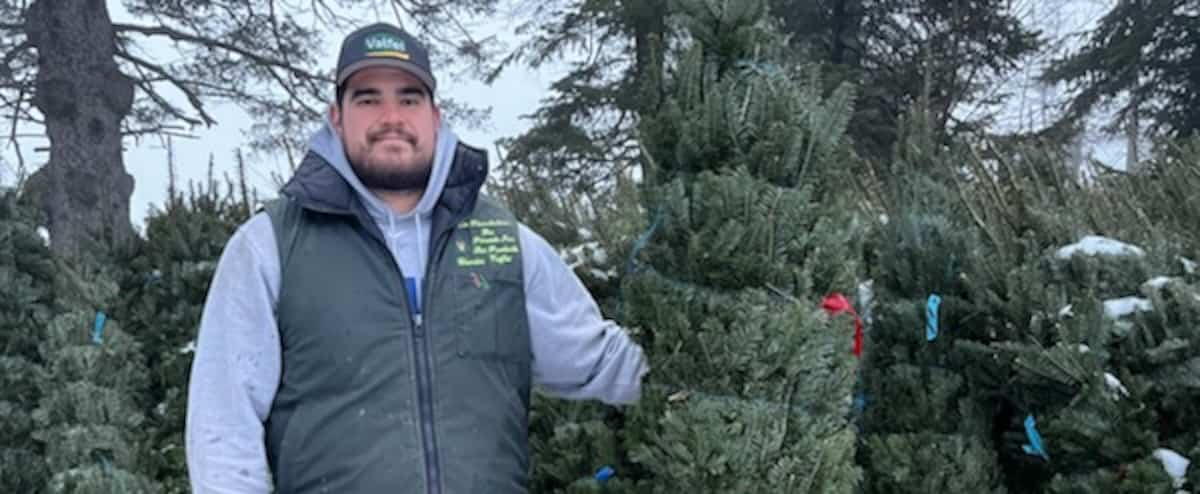Fans of natural fir trees must pay an average of five dollars more for a tree this year. An increase which could become recurring in the coming years due to climate change.
• Read also: Do you have a cold during the holidays? Your decorations may be to blame
Quebec producers need between eight and ten years to grow a Christmas tree to maturity. However, in recent years, they have had to deal with extreme weather conditions which complicate their planting cycles.
“We have a lot of problems related to climate change,” says Charles Vaillancourt, owner of the company Les Produits Valfei. We have a lot of losses due to severe droughts and periods of heavy rainfall. We also had spring frosts.
“It will drive prices up in the coming years.”
Charles Vaillancourt is a tree producer, but also president of the Association of Christmas Tree Producers of Quebec (APANQ).
courtesy
The man who is also president of the Association of Christmas Tree Producers of Quebec (APANQ) suffered production losses whose consequences will be perceptible in the long term.
“Our mature trees were spared, but we lost 10% of our less mature plantations due to precipitation,” adds Vaillancourt, whose company produces 200,000 trees per year.
The adverse effects of climate change are compounded by rising costs of transportation, taxes, labor wages and repairs of heavy machinery.
“It has an impact on our price to wholesalers and therefore to consumers,” explains Vaillancourt. For example, spare parts for our machinery are becoming unaffordable.”
For all these reasons, he sold his trees at an increase of three dollars this year. The same scenario risks repeating itself in 2024.
Demand still strong
We went to a few points of sale in the Montreal area. Retailers say customers are still there despite the slight increase on each tree.
They should have no difficulty selling their trees by December 23. Sales prices are between $50 and $200 depending on the type, height and quality of the trees.
“The increase bothers people a little, but that doesn’t stop them from buying a tree,” says Louis Gagné, seller at Marché 440. “It’s not the only thing that costs more these days.”
For Luigi Bono, co-owner of Sapins chez Michel at the Jean-Talon market, the increase has been constant since the pandemic.
“The economy is not doing very well and salaries are not keeping up with inflation and the cost of living,” he explains. Purchasing power is increasingly in danger. We don’t want to strangle the consumer.”

Luigi Bono is co-owner of Sapins chez Michel at the Jean-Talon market.
Mathieu Boulay – Journal de Montréal
A long market to correct
For a fir tree producer, the losses suffered in the fields in 2023 will not have a significant impact before 2030.
“These are long cycles,” explains Hugo Cleary, producer in Estrie. When it pays off, everyone starts planting, there are too many fir trees on the market.
“Everyone stops planting, but ten years later, there is a shortage of trees. It pays off so everyone starts planting again. It’s a market that takes a very long time to correct.”
We are currently seeing the consequences of years which have been very difficult for the industry.
“Between 2008 and 2012, we lost 50% of our producers in Quebec. These were years when the tree was almost worthless, emphasizes the owner of Enterprise Cleary. Since 2020, there has been a lack of trees on the market.”
Climate change will hurt producers more and more. If they suffer more losses, they will have fewer trees to send to the market. Of course, prices could rise and the bill for consumers will be higher.
